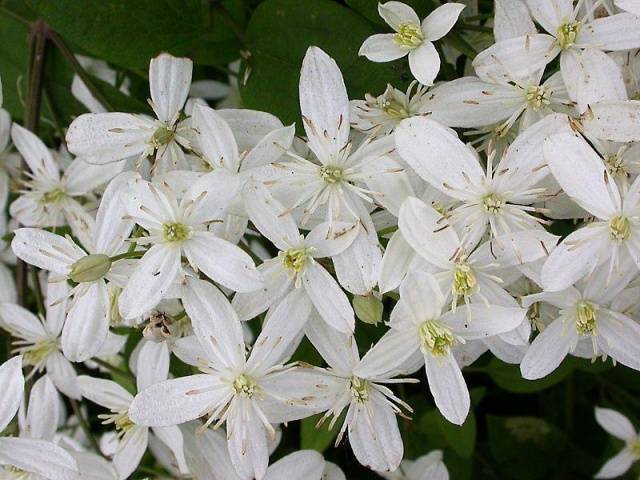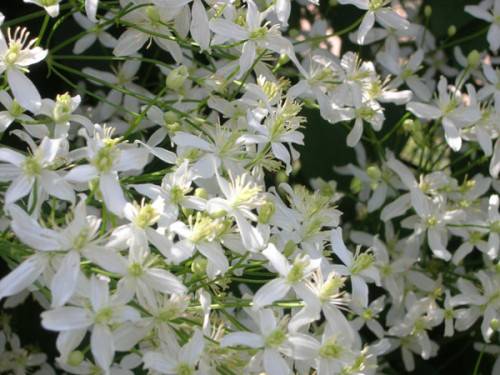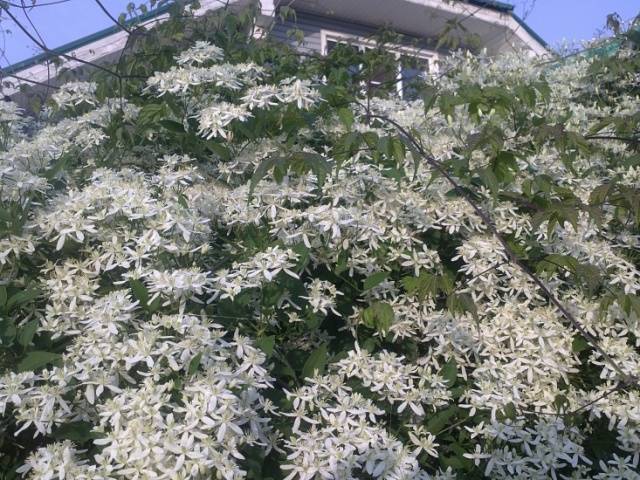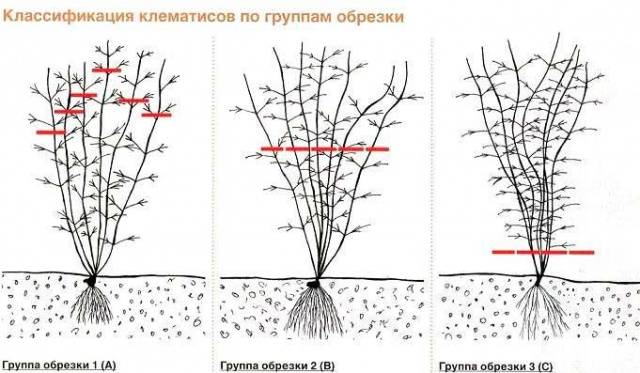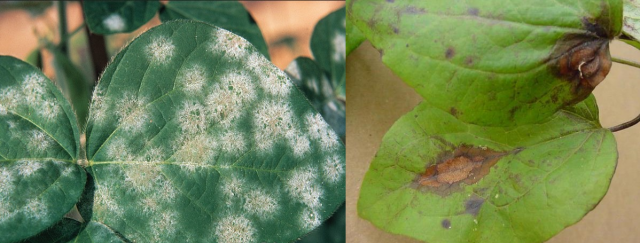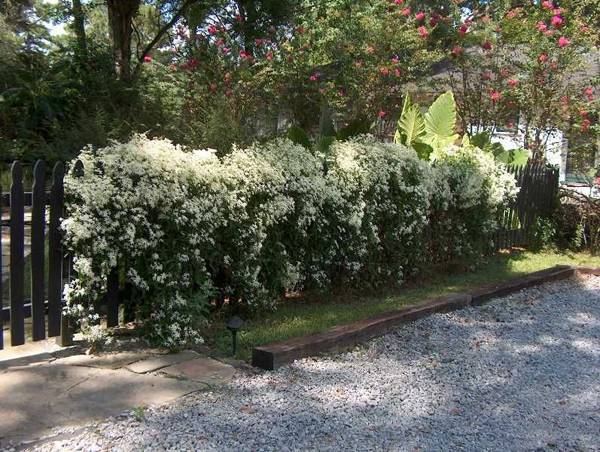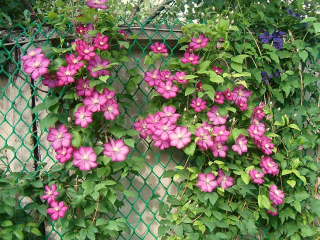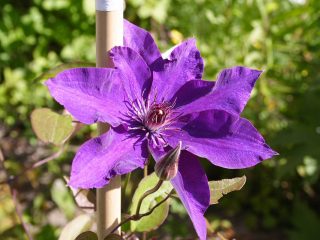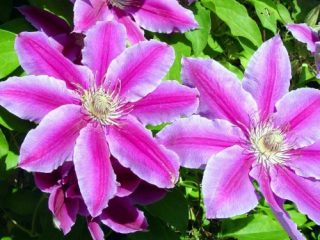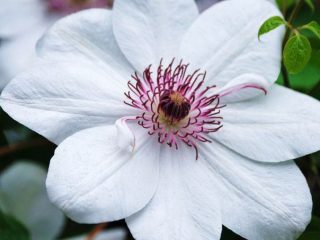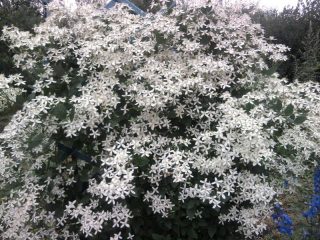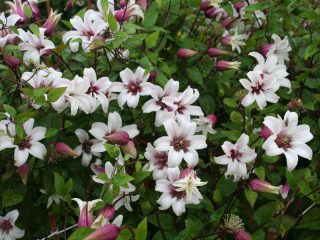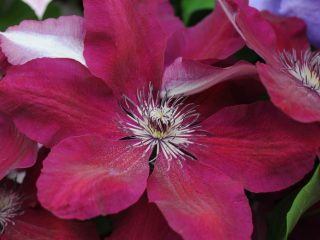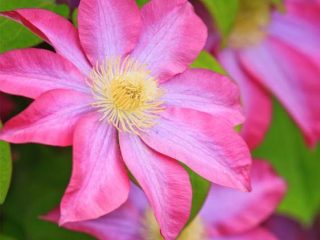Content
There are several dozen different types of clematis, one of which is Clematis Manchurian. This is one of the rarest, but at the same time completely unpretentious species. This is exactly what we will talk about in today’s article.
Description
The homeland of clematis is the Far East, China and Japan, where they first began to use a liana-like plant to decorate numerous gardens and park areas. Currently, clematis is widely used in the central regions of other European countries, including Russia.
Characteristic
Clematis is a liana-like, flowering, perennial plant that reaches a height of 150-300 cm. The leaves are arranged oppositely, most often they are entire, odd-pinnate or trifoliate, less often - twice trifoliate.
The perianth consists of 4-8 sepals. The flowers of this species are white and consist of 3-7 petals. During the flowering period, up to several hundred beautiful, snow-white flowers can form on one plant. The fruit of Clematis Manchurian is a multi-nut.The flowering period occurs at the end of June - beginning of July.
The stems are branched, entwining nearby structures, stones and ledges. Clematis Manchurian has a rather specific but pleasant aroma, which is especially noticeable when the flowers are exposed to sunlight, as well as a burning juice, which causes irritation when it comes into contact with mucous surfaces.
Trimming group
There are three groups of clematis pruning. Clematis Manchurian belongs to the third group of pruning. This category includes plants that bloom for a long time, and flowers appear on the shoots of the current year.
Plants in this group are considered the most unpretentious, so preparing for the coming winter does not require much effort. After pruning, fairly short shoots are usually left.
Spreading
This type of clematis is considered quite unpretentious; it favorably tolerates lack of moisture and frost. Typically, Clematis Manchurian grows along ponds, on hilly slopes and meadows. The shrub prefers sunny growing areas with moderate humidity.
Landing
Shrubs are always planted in the ground in autumn or spring. For successful plant growth, it is important to take into account the composition of the soil and the planting location.
Choosing a place and time of landing
When planting, it is best to give preference to an open area. Clematis is often planted next to fences, buildings and gazebos so that the clematis can later weave.
It is also worth making sure that the selected area does not have groundwater located close to the surface of the earth. Clematis Manchurian does not tolerate strong humidity and wind.
Selection of seedlings
When choosing a seedling, you should pay attention to the condition of the shoots and root system. There should be no severe damage, creases or cracks. Also, Clematis Manchurian should not have obvious signs of disease or pest damage.
It is best to contact trusted nurseries that specialize in growing and selling ornamental outdoor plants.
Soil requirements
Clematis Manchurian needs nutritious and fertile soil. You can use a ready-made substrate for flowering and perennial plants, or you can add mineral fertilizers, humus, ash, peat and other organic components to the soil when planting.
How to plant
The main stages of planting shrubs:
- First you need to dig a hole in the selected area, the diameter and depth of which is about 60 cm.
- The excavated soil should be mixed with organic and mineral fertilizers, and crushed stone or expanded clay should be poured into a thin layer at the bottom of the hole.
- Next, you should gradually fill in the mixture of soil and fertilizers and form a small elevation. Then you need to pour water until it shrinks completely.
- The seedling is located in the center of the hole, the root system is carefully straightened out.
- Gradually, the roots of the seedling need to be covered with earth until the root collar is deepened by 12-15 cm.
- At the last stage, it is important to mulch the soil around the seedling with peat or sawdust. Clematis is tied to a support, and the ground around is abundantly watered.
Care
Subsequent care for clematis Manchurian includes adherence to the watering regime, regular feeding and pruning of shoots, as well as preventive measures to combat diseases and pests.
Top dressing
It is worth applying fertilizers from the second year after planting. During the growing season, clematis needs nitrogen-containing fertilizers; during the formation of buds, it is best to apply fertilizers with a high potassium content, but after flowering, clematis urgently needs phosphorus.
Loosening and mulching
Tree bark, peat, humus or sawdust are perfect as mulch. It is recommended to loosen the soil around clematis after each watering 1-2 times a week.
Watering
Overmoistening of the soil is something that Clematis Manchurian definitely does not like. It is optimal to water the bush once a week with 3-5 liters of water; in the dry season, the number of waterings can be increased to two or three times a week.
Trimming
Since clematis belongs to the plants included in the third pruning group, after flowering all shoots are cut off. Moreover, if bushiness and density are important, then pruning is carried out to the first leaf, but if you need to get large and abundant flowering, then you need to cut off the entire shoot completely.
Shelter for the winter
This type of clematis tolerates low temperatures favorably. However, after pruning in the fall, it is best to cover the bush with leaves or spruce branches.
To prevent too much water from accumulating around the root system during a thaw, you need to form a small elevation at an angle.
Disease and pest control
The main diseases affecting clematis Manchurian are presented in the table:
Disease | External signs | Fighting methods |
Gray rot | Brown coating on leaves or shoots. | The affected areas must be cut off and burned, and the entire plant must be treated with a foundation solution. |
Powdery mildew | It looks like pronounced white spots on shoots and leaves. | A solution of topaz or foundationazole is used as the main means to combat powdery mildew. |
Rust | Red swellings on the leaves. | A solution of Bordeaux mixture is used to remove rust. |
The main pests of Manchurian clematis are snails, slugs, and spider mites. In the first case, insects are removed manually, and to destroy spider mites, the bush is treated with an acaricide solution.
Reproduction
Reproduction of this species can be carried out in four main ways:
- Seeds. First, seedlings are obtained from seeds, which are planted in a permanent place only after 2-3 years. Growing clematis Manchurian from seeds is a rather labor-intensive and complex process.
- Cuttings. First, shoots with existing buds are pruned. At a distance of 2-3 cm from the bud, an even cut is made on each shoot. The length of the cuttings must be at least 10 cm. It is recommended to treat the edges of the shoots with a special agent that stimulates the growth of the root system, and then plant them in the ground.
- Dividing the bush. This method is used not only for propagating vines, but also for rejuvenating and thinning the bush. Clematis Manchurian is dug up, after which the rhizome is divided into several parts, which are subsequently planted as independent plants.
- By layering. An adult plant that has been growing in the same place for more than 6 years can be propagated by layering.To do this, the longest and healthiest shoot with a large number of large buds is tilted to the ground and sprinkled with fertile soil. It is important not to forget to regularly water the place where the shoot is attached. After some time, roots will appear, and after that the shoot from the main bush can be cut off, and the new plant can be transplanted to its permanent place of growth.
For beginners, it is recommended to use the method of propagating clematis by cuttings. It is important to follow all the basic rules and cutting techniques.
Clematis Manchurian in landscape design
Clematis Manchurian is an attractive flowering plant widely used for landscaping in parks and gardens. It looks especially good next to brick walls, a veranda, a balcony or an openwork gazebo.
In landscape design it is used for vertical gardening. With its help, you can braid arches, thereby creating beautiful transitions from one area of the garden to another. Clematis Manchurian is often planted next to other flowering liana-like plants for weaving arbors or hedges.
Reviews
Conclusion
Clematis Manchurian is a rather unpretentious perennial flowering plant, which is deservedly grown in many gardens and parks. Proper care, adherence to the watering regime and timely pruning of the plant will allow clematis to be one of the main decorations of the garden for many decades.
